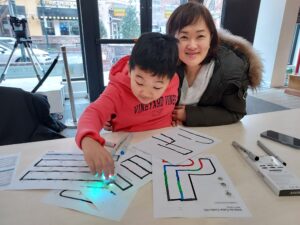 Color-Coding Robotics in Elementary STEM Scouts
Color-Coding Robotics in Elementary STEM Scouts
Specific steps. Patience. Innovation. Thanks to coding, we are able to live our lives in a more convenient and revolutionized way! Throughout this module, Scouts use color-coding robots in a variety of ways to boost their familiarity with robotics, coding, problem-solving, and design-thinking. Starting with color codes, Scouts become comfortable with the idea of inputs and outputs and will then move on to block-coding with an online programming language.
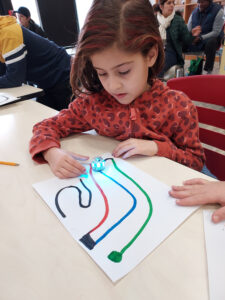
STEM Scouts also focus on integrating art into STEM by creating various designs while
also learning about real-world concepts like data collection, Venn diagrams, and blueprints. Those who code hold the world’s technological future in their hands, and the opportunities are unlimited!
Soft Robotics in Middle School
The middle schoolers’ STEM Scouts robotics module delves into an exciting and newly developing branch of robotics—soft or flexible robotic structures. When you look at an elephant’s trunk or an octopus’s arm, you can see natural examples of flexible structures used to grasp and manipulate objects. There are many tasks in our world that a rigid structure just does not perform well. Soft Robotics explores the development of flexible structures to work in these areas. In this module, Scouts will explore the concept of soft robots and learn how flexible structures move and how they can be programmed to perform useful tasks. This module was developed by the REACH Lab at the University of Tennessee, Knoxville.
High School Robotics in a STEM Exploring Post
Botball Educational Robotics requires the students to build, program, test and document two robots to autonomously complete scoring challenges. The robots are built out of kits provided by KISS Institute for Practical Robotics (KIPR). Photographed below are members of Explorer Post 1010 working with the PVC pipe as they prepare for a Botball competition.
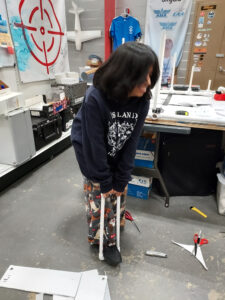
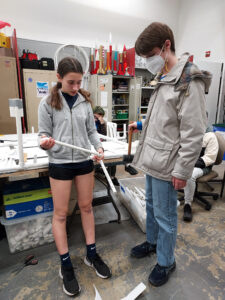
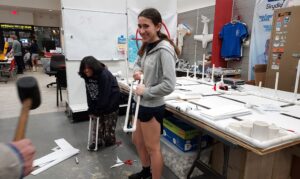

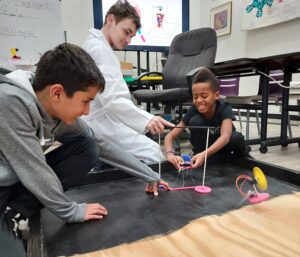 One of our recently developed STEM Scouts modules takes elementary schoolers on the journey of innovation. During their first meeting, scouts were handed individual kits and given basic instructions to assemble a simple yet entertaining wiggle bot. Wiggle bots are simple bots, that use a nonconcentric weight to generate some movement. As soon as the bots power on, typically they move in abysmal patterns, causing much amusement and giggles. The came the challenge: scouts were tasked to control their bots and make them “move in a straight line.”
One of our recently developed STEM Scouts modules takes elementary schoolers on the journey of innovation. During their first meeting, scouts were handed individual kits and given basic instructions to assemble a simple yet entertaining wiggle bot. Wiggle bots are simple bots, that use a nonconcentric weight to generate some movement. As soon as the bots power on, typically they move in abysmal patterns, causing much amusement and giggles. The came the challenge: scouts were tasked to control their bots and make them “move in a straight line.”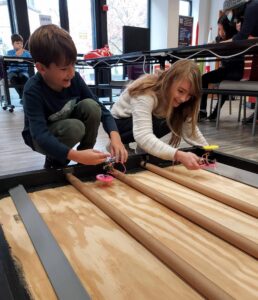
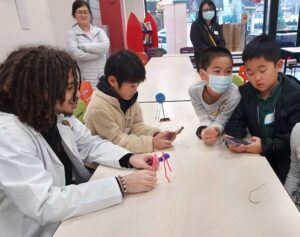
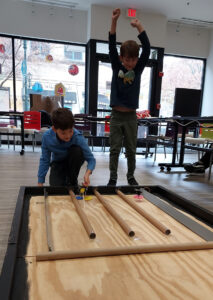 This seemingly lighthearted challenge became a serious exercise in stamina and iteration for the scouts, immersing them in the hands-on intricacies of the engineering design process—a skill closely intertwined with the art of inventing.
This seemingly lighthearted challenge became a serious exercise in stamina and iteration for the scouts, immersing them in the hands-on intricacies of the engineering design process—a skill closely intertwined with the art of inventing.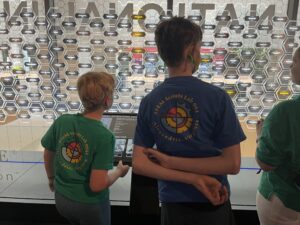
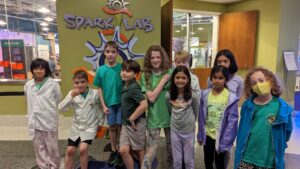 The
The 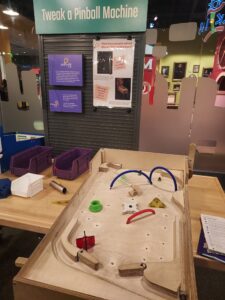
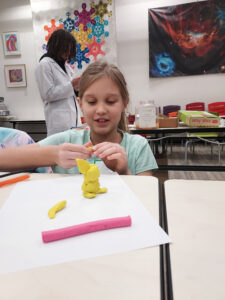
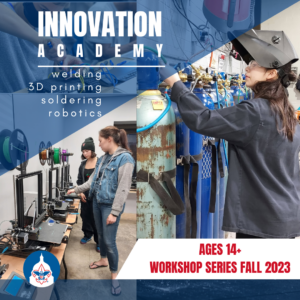 We are excited to offer this workshop series for girls and boys ages 14+ to learn about welding, 3d printing, coding and robotics! This program is called Exploring with Innovation Academy, and takes place in Alexandria, VA at Building Momentum, a problem-solving organization with expertise in training people of all ages in fabrication and building technologies. Learn more and register at:
We are excited to offer this workshop series for girls and boys ages 14+ to learn about welding, 3d printing, coding and robotics! This program is called Exploring with Innovation Academy, and takes place in Alexandria, VA at Building Momentum, a problem-solving organization with expertise in training people of all ages in fabrication and building technologies. Learn more and register at: 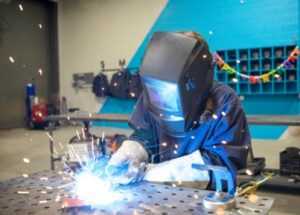 Whom is this program for?
Whom is this program for?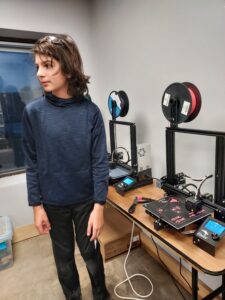 When?
When?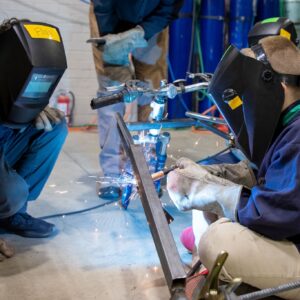 What will you learn?
What will you learn?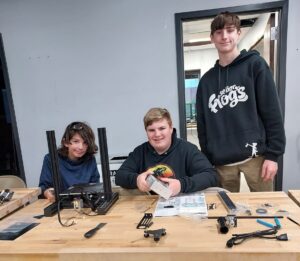 At Building Momentum, skillsets are taught in record time. As we write this, eight scouts are half-way through an 18-hour Innovation Academy Exploring Program designed to teach youth ages 15-22 skills in fabrication. This six session program focuses on: welding, 3d printing, robotics and coding.
At Building Momentum, skillsets are taught in record time. As we write this, eight scouts are half-way through an 18-hour Innovation Academy Exploring Program designed to teach youth ages 15-22 skills in fabrication. This six session program focuses on: welding, 3d printing, robotics and coding.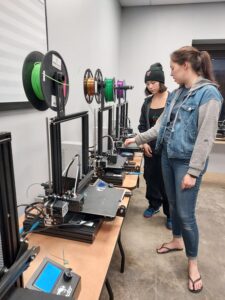 When I walked into session three of the program, I wasn’t sure what to expect. If you’ve 3d printed before, you know that the printing itself is the driest and can go on for hours. At Building Momentum, the youth were not twiddling their thumbs though! They got into another experience while they waited: assembling 3d printers from new-in-box conditions. This offered an excellent understanding the components and mechanics of the printer.
When I walked into session three of the program, I wasn’t sure what to expect. If you’ve 3d printed before, you know that the printing itself is the driest and can go on for hours. At Building Momentum, the youth were not twiddling their thumbs though! They got into another experience while they waited: assembling 3d printers from new-in-box conditions. This offered an excellent understanding the components and mechanics of the printer.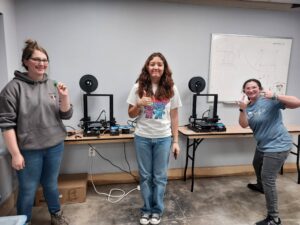

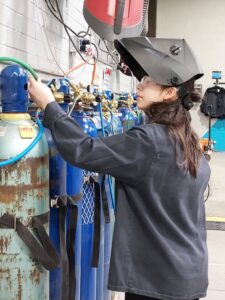 In the first two sessions, scouts had already welded. Some kids welded together metal frogs, some wrote their name in metal. Not just to earn a merit badge, but to really develop confidence, comfort and skills holding a welder.
In the first two sessions, scouts had already welded. Some kids welded together metal frogs, some wrote their name in metal. Not just to earn a merit badge, but to really develop confidence, comfort and skills holding a welder.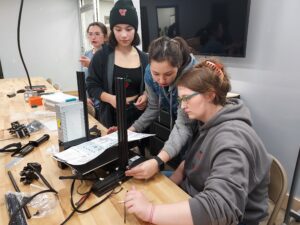 Summer Camps
Summer Camps 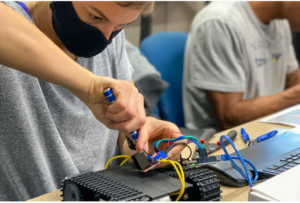 Students will get the real-world experience of time management while completing several hands-on projects throughout the week. This is a fast-paced camp best for students who are eager to learn and put in the hard work.
Students will get the real-world experience of time management while completing several hands-on projects throughout the week. This is a fast-paced camp best for students who are eager to learn and put in the hard work.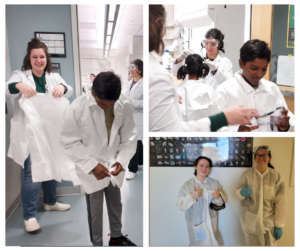 On April 22, 2023, George Mason University’s Chemistry Club is opening their doors to Webelos/AOLs/Scouts BSA and STEM Scouts for guided chemistry workshops!
On April 22, 2023, George Mason University’s Chemistry Club is opening their doors to Webelos/AOLs/Scouts BSA and STEM Scouts for guided chemistry workshops!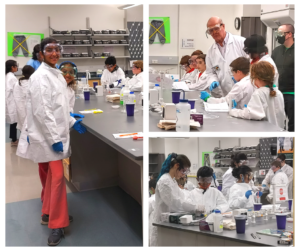
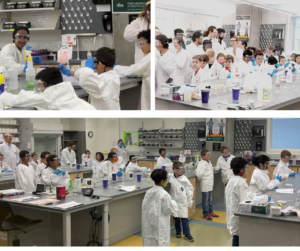
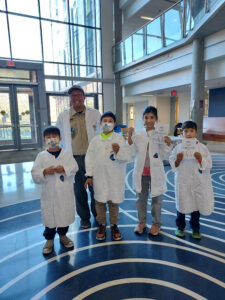
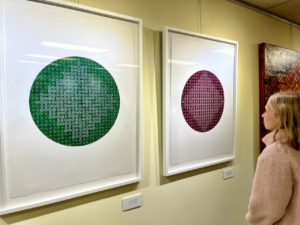 If you were to look up the meaning of Symmetry, you would find definitions that relate to mathematics, physics, and art. The
If you were to look up the meaning of Symmetry, you would find definitions that relate to mathematics, physics, and art. The 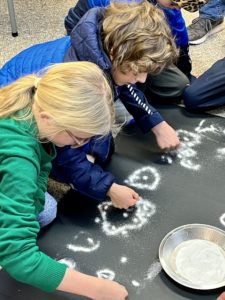 Cub Scouts learned about the history and cultural significance of the Kolam and explored the many forms of symmetry found within them. While learning to draw different Kolam, they also gained a better understanding on the concept of fractals. Aishwariya demonstrated the traditional way Kolam are created using rice flour and sand and had the Cub Scouts do their best at creating their own. Following the workshop, Cub Scouts viewed Aishwariya’s art collection called Thalaimuraigal, Three Generations of Kolam, displayed within the Gandhi Memorial Center. The collection showcases Kolam created by Aishwariya’s grandmother, mother, and herself.
Cub Scouts learned about the history and cultural significance of the Kolam and explored the many forms of symmetry found within them. While learning to draw different Kolam, they also gained a better understanding on the concept of fractals. Aishwariya demonstrated the traditional way Kolam are created using rice flour and sand and had the Cub Scouts do their best at creating their own. Following the workshop, Cub Scouts viewed Aishwariya’s art collection called Thalaimuraigal, Three Generations of Kolam, displayed within the Gandhi Memorial Center. The collection showcases Kolam created by Aishwariya’s grandmother, mother, and herself.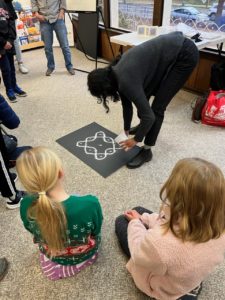 Shanthi describes Kolam as, “a versatile tool for her to explore topics she is curious about, such as cosmology, neuroscience, and math.” The connection between the art form and STEM concepts is especially clear at her art installation, Singularities and Infinities, displayed at the Katzan Art Center at American University. Pack 278 Cub Scouts ventured to the Katzan Art Center following the workshop to continue their investigation into the parallels between Art and Science.
Shanthi describes Kolam as, “a versatile tool for her to explore topics she is curious about, such as cosmology, neuroscience, and math.” The connection between the art form and STEM concepts is especially clear at her art installation, Singularities and Infinities, displayed at the Katzan Art Center at American University. Pack 278 Cub Scouts ventured to the Katzan Art Center following the workshop to continue their investigation into the parallels between Art and Science.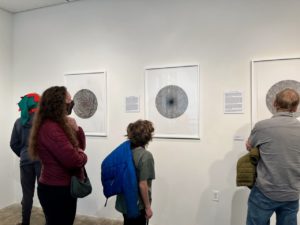 Experimental Particle Physicist, Michael Albrow, combined prose and poetry with Shanthi’s artwork to explore and express concepts of the cosmos. Found within the Artists’ Statement, the following best explains the goal of the Fearful Symmetry NOVA; “While artists and scientists view the universe through different disciplinary lenses, there is much in common – a sense of wonder and beauty, a fascination with the unknown, the boundaries of our knowledge, the perfect symmetries and broken symmetries.” Pack 278 Cub Scouts, parents, and leaders left the day with a better understanding of how symmetry can be found within their everyday life.
Experimental Particle Physicist, Michael Albrow, combined prose and poetry with Shanthi’s artwork to explore and express concepts of the cosmos. Found within the Artists’ Statement, the following best explains the goal of the Fearful Symmetry NOVA; “While artists and scientists view the universe through different disciplinary lenses, there is much in common – a sense of wonder and beauty, a fascination with the unknown, the boundaries of our knowledge, the perfect symmetries and broken symmetries.” Pack 278 Cub Scouts, parents, and leaders left the day with a better understanding of how symmetry can be found within their everyday life.